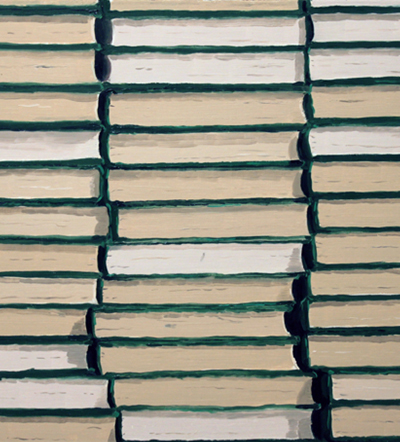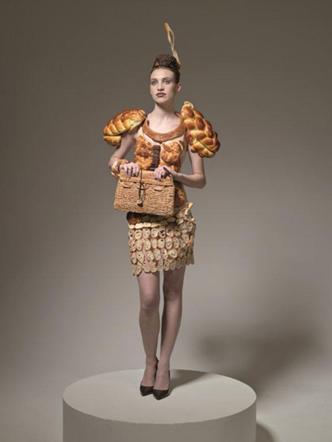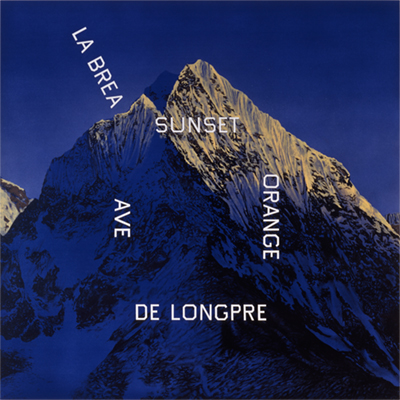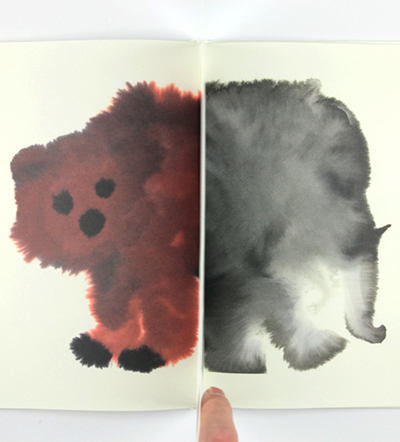
![]()
Vivid watercolors seep into the page and emerge with life. Page by page a menagerie of wild creatures reveal themselves: a baby fawn, a pig, a parrot and many more, each one rendered in the same colorful wet wash technique. Rop Van Mierlo’s book, Wilde Dieren (Wild Animals), showcase this illustrator, graphic designer and animator’s talent in all fields. Each critter is embodied with the sensation of watercolors soaking into the paper. Displayed with immediacy, the animals spring to life from their minimal white background. Van Mierlo attended the Design Academy in Eindhoven studying “Man and Communication,” as well as the Willem de Kooning Academy, where he studied Graphic Design. His modern education has taught him to “ask questions and not give answers” and has yielded impressive work. The red McCaw’s wings look blotchy and soaked and the tiger seems to drip his strips, each creature taking on a new kind of life. This 34 page book is a unique living experience, every beast as absorbing as the next.
Rop Van Mierlo


A wise friend of mine once rhetorically asked me, “Who doesn’t love books?” From now until February 26, Ex Libris — a bookworm’s dream of an exhibition at Adam Baumgold Gallery — is the resounding answer. Literally meaning, “from the books,” the show features book-inspired work by 28 different artists including titans such as Ed Ruscha, Chris Ware, David Hockney, and Tom Burckhardt. So long as the art stays true to the rather loose theme, anything goes. Thus viewers can expect everything from artists’ books and prints to drawings and sculpture, with nods to Kant, Burroughs, Proust, pulp fiction and comics laced throughout. The sheer variety of different pieces suffuses the show with a playful yet deferential tone as artists pay homage without ever taking themselves too seriously. Jennie Ottinger’s delicate book cover paintings of Truman Capote’s In Cold Blood and Salman Rushdie’s The Satanic Verses are just one example. At the risk of sounding overly dramatic, no true lover of books should miss this show.
Adam Baumgold Gallery

BRONX FLOOR FLOOR HOLE 01 Gordon Matta-Clark Bronx Floor: Floor Hole, 1972 courtesy of the Estate of Gordon Matta-Clark and David Zwirner Gallery (Click for slideshow)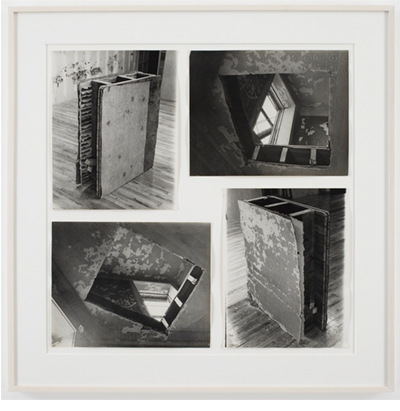
![]()
In 1975 the young American artist Gordon Matta-Clark took a chainsaw to a perfectly ordinary single family house in Englewood, New Jersey and split it in two. While the stunt smacked of bad-boy behavior and art world sensationalism, it was hardly an act of anarchy or desperation. Rather, it was the intervention of an artist with the keenest sensitivities renouncing commercialism in search of a more elemental understanding of space and materials.
A new exhibit at the David Zwirner Gallery collects artworks from 112 Greene Street, the legendary gallery Matta-Clark founded in SoHo in 1970. That space became a haven for a vibrant, eclectic group of New York artists who gathered, debated, performed, and exhibited there. This survey, which includes many pieces by Matta-Clark himself, brings that world richly to life and illuminates the themes of his work, themes that are as resonant today as they were forty years ago.
Educated as an architect, Matta-Clark left the profession to create sculptures, installations, films and photographs that often employed architectural forms and materials in unorthodox, unsettling ways. His most famous works are “cuttings,” strategic slicings, removals, and recombinations of parts of existing buildings.

Bear Jungle, 2010 oil, acrylic, and enamel on canvas Courtesy Paul Kasmin Gallery (Click for slideshow)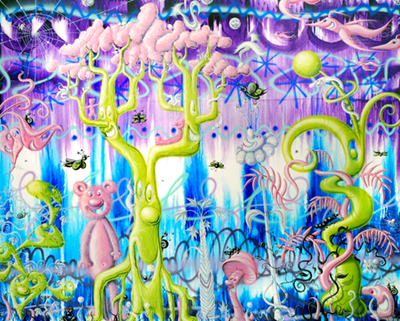
![]()

Last summer, making my way to the entrance of the Laguna Art Museum’s widely popular Art Shack opening, I had to elbow my way past a clump of people standing in line for a taco truck parked at the curb. Past the hungry hipsters, I encountered a second, more excitable line waiting their turn to get into a Pace Arrow motor home, also parked at the curb. I paused for a moment, trying to assimilate the conveyance in front of me with the horde of flashy, Orange County art fans crowding the sidewalks. The RV was nondescript except for a couple of perky looking neon pink faces swooshed on its side. Only when the door swung open was I able to catch a glimpse of its DayGlo interior and psychedelic embellishments, shag carpets and random commodities, all painted and glowing under black lights. The door clicked shut again. I immediately got in line. This acid trip of a trailer was my not-so-subtle introduction to the work of Kenny Scharf.
Only later did I realize that the man behind “Space Arrow” helped pave the way for 1980s street art, rounded out the New York, Basquiat-Haring pop-art trifecta, and has exhibited his work across the country (and world) since 1981. All the while carving himself a nice little niche almost entirely out of playful and fantastic, yet somehow deviant imagery.


![]()
There are some with a taste for fashion. And then there is photographer Ted Sabarese. In his world, loafs of challah serve as shoulder pads, artichoke leaves can be assembled into evening gowns, and ravioli is best worn with brown loafers. Shot in early 2009, Sabarese’s “Hunger Pains” series predates Lady Gaga’s infamous meat dress, but it may be thanks in part to the pop star’s awards show attire that these flavorful images have found a second life online. Its outfits may seem a bit unusual, but imagine having to explain a fur coat or a leather jacket to someone unfamiliar with either of them.
Given his experience in advertising, including campaigns for Verizon Wireless, IKEA, and Halls Cough Drops, it makes perfect sense that the photographer is drawn to character-driven portraits best appreciated as components in a portfolio. As in advertising, there are signals to be found just about everywhere in his pictures. PLANET recently spoke to Sabarese about food, fashion, and the controversy that results from mixing the two.
Looking at some of the edible clothing that you’ve assembled, it’s amazing how much it tends to resemble the textured fabrics and layered articles that people might actually wear.
Obviously when you look at the images, you do know that it’s food. But the hope is that maybe for a nanosecond, you look at it and say, ‘Oh, that’s beautiful,’ especially the artichoke dress, which I think is a beautiful couture dress. There’s the waffle pants guy, and his banana shirt was kind of argyled. And the man wearing the pasta – it was supposed to be like a woven sweater.

Images courtesy of Gestalten (Click for Slideshow)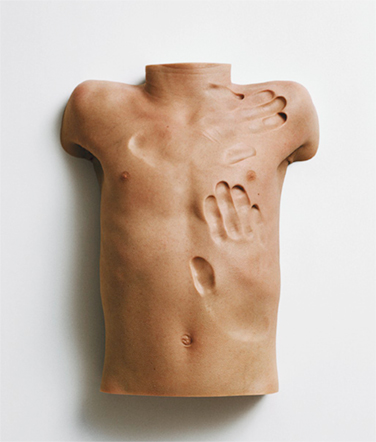
![]()
Splice, cut, burn, sharpen, dismember, Doppelgänger: Images of the Human Being, a new book from Gestalten, asks the question: just how do we mask or reveal our inner selves? Exploring current trends in physical abstraction, each of its seven chapters — Embody, Dissolve, Appeal, Reshape, Perform, Deform, and Escape — signifies a different approach to the technical manipulation we exact on our corporeal façades. Invoking Dada, Surrealism, high fashion, and industrial design aesthetics, Doppelgänger taps into our creative potential and art’s transformative agency (certainly apropos classical conventions). A host of contemporary artists show how digital media has shattered allegiances to da Vinci’s ideal proportions and equipped us with truly radical modes of expression, erasing or positing archetypes we never imagined.
Highly stylized, Doppelgänger: Images of the Human Being is nevertheless earnest in conveying ironies inextricable to the human experience. We are chameleon creatures, ever morphing and reaching deep into ancient folklore to find our “true” identities. As Phyllis Galembo depicts natives in ritual (Ngar Ball Traditional Masquerade Dance, Cross River, Nigeria, 2004), other artists frame humans in the phantasmagorical and slightly grotesque (e.g. Madame Peripeti’s Pughatory series).

The lure of the open road is a wily temptress. From Jack Kerouac to Bruce Chatwin to The Motorcycle Diaries, there’s something about life on the road that speaks almost prophetically to the solitary tempers of creative men. Ed Ruscha, one of the most recognizable and profuse artists of our time, is no exception. This week, the Modern Art Museum of Fort Worth opens Ed Ruscha: Road Tested, a 75-piece personal compendium of the artist’s life (and work) in transit. Conceived by the Modern’s head curator, Michael Auping, the show spans Ruscha’s entire career and every medium as he speeds through no-name towns, past building facades, service stations, signage and all the other random objects that make up the mundane, yet mythical thoroughfares of any American city — creating as he drove, what would eventually become some of the most iconic images of the 20th century.
Auping, who first met Ruscha as a grad student in the early 70s, was kind enough to share his thoughts on why this show is unlike any other Ruscha retrospective you’ve ever seen.


Click for slideshow Speed Of Life Life 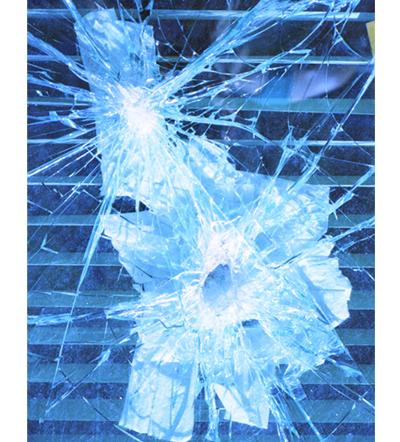
![]()
In an age in which Photoshop dominates the photography landscape, it is a relief to have David Benjamin Sherry to bring some of the magic back to analog photography. Sherry’s vividly colored autobiographic photos chronicle a range of personal topics and an even broader and bolder range of sexual fantasies. “If I am romantic of the past for one thing, it would have to be the handwork, feel, emotional content, labor-intensive and traditional printing of photography.” says Sherry. Certainly there is a care and devotion to his process which serves to strengthen the magic of his picture making.
Sherry received his BFA from Rhode Island School of Design in and his MFA from Yale and has established himself in New York’s downtown art scene along side the likes of Benjamin Cho, Ryan McGinley, and David LaChapelle, whom he interned for as a teen. Making darkroom pictures in a digital age, Sherry certainly seems to be channeling his Woodstock roots with his blend of fantasy and fashion. Work from his trip around Pacific Northwest radiates with a trippiness similar to aura fields. His work appears strikingly genuine, lacking in irony and contrariness that has become commonplace in contemporary art. Instead, Sherry sticks to the truth, hoping that people will sense in the images the strength of their creator. Indeed, David Benjamin Sherry’s work speaks for itself.

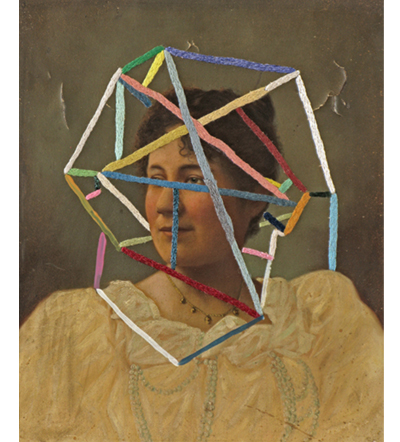
The Accident 2010 Embroidery and acrylic on found portrait
I’ll be honest with you: I’m a sucker for nostalgia in all her shapes and forms. I like cassette tapes and old school label makers. I inhale the pages of dusty books, seek out old family photographs taken in bad lighting, and collect cheesy handwritten postcards from back when postage stamps still had to be licked. Hence, Julie Cockburn — a British artist specializing in altered portraits using found photography, images, and paintings has struck a very deep chord in me. Laying plastic game parts, embroidery, collage and oil paint over each found item, Cockburn’s work confounds typical assemblage. Many of her re-imagined portraits resemble the facets of a gem, or crude impasto finger-paintings rather than actual people. Taking great freedom with each article she finds, Cockburn’s abstract manipulations brand her subjects with new identities and distorted histories — skewing their place in the world while simultaneously rescuing them from the trash bins of obscurity. There’s a playful, yet twisted quality to each fractured subject, caught somewhere between absurdity, forgotten memories and diluted grandeur. Altogether nostalgic and forlorn, Cockburn is also adept at using childhood drawings and kindergarten craft materials like popsicle sticks, stickers, beads, and thread to stirring effect.
Chosen as a selected artist for Britain’s 2010 Marmite Prize for Painting, Julie Cockburn’s work will be shown as part of their traveling exhibition, ending in May. Two solo shows, both in London — at Matt Roberts Arts and John Jones Project Space are scheduled for later this year.

Click for slideshow From Polka Dots series 1976 Courtesy Betty & George Woodman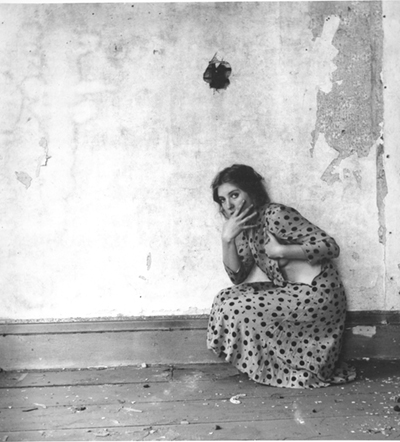
![]()
Photographer Diane Arbus once said that a photograph is “a secret about a secret. The more it tells you, the less you know.” Those words resonate powerfully in the work of Francesca Woodman, whose photographs from the 1970s and 80s are simultaneously mysterious, frank, playful, surreal, delicate and raw.
The daughter of two successful and accomplished artists, Woodman reached artistic maturity at an extremely young age. At thirteen, she was already making striking self-portraits; by the time she was seventeen, she was shooting haunting, intense images that were uniquely hers. Abandoned houses were her favorite place to work, but she also shot in forests and on beaches, where she placed female figures (often herself) communing with the environment in original, provocative ways. Sometimes, a surreal element creeps in: masks and mirrors hide faces, bodies are obscured by birch bark and peeling wallpaper. Woodman’s frank sexuality and daring enhances her perfectly-balanced compositions. Each image becomes its own little mystery.
Unfortunately, Woodman’s early work turned out to be her only work. In 1981, aged twenty-two and suffering from depression, she jumped to her death from a window in Greenwich Village. Like Diane Arbus, who also committed suicide, Woodman has become something of a mythic figure: the tortured girl genius whose talent couldn’t save her.






 Facebook
Facebook Permalink
Permalink Digg
Digg Reddit
Reddit LinkedIn
LinkedIn StumbleUpon
StumbleUpon Tumblr
Tumblr